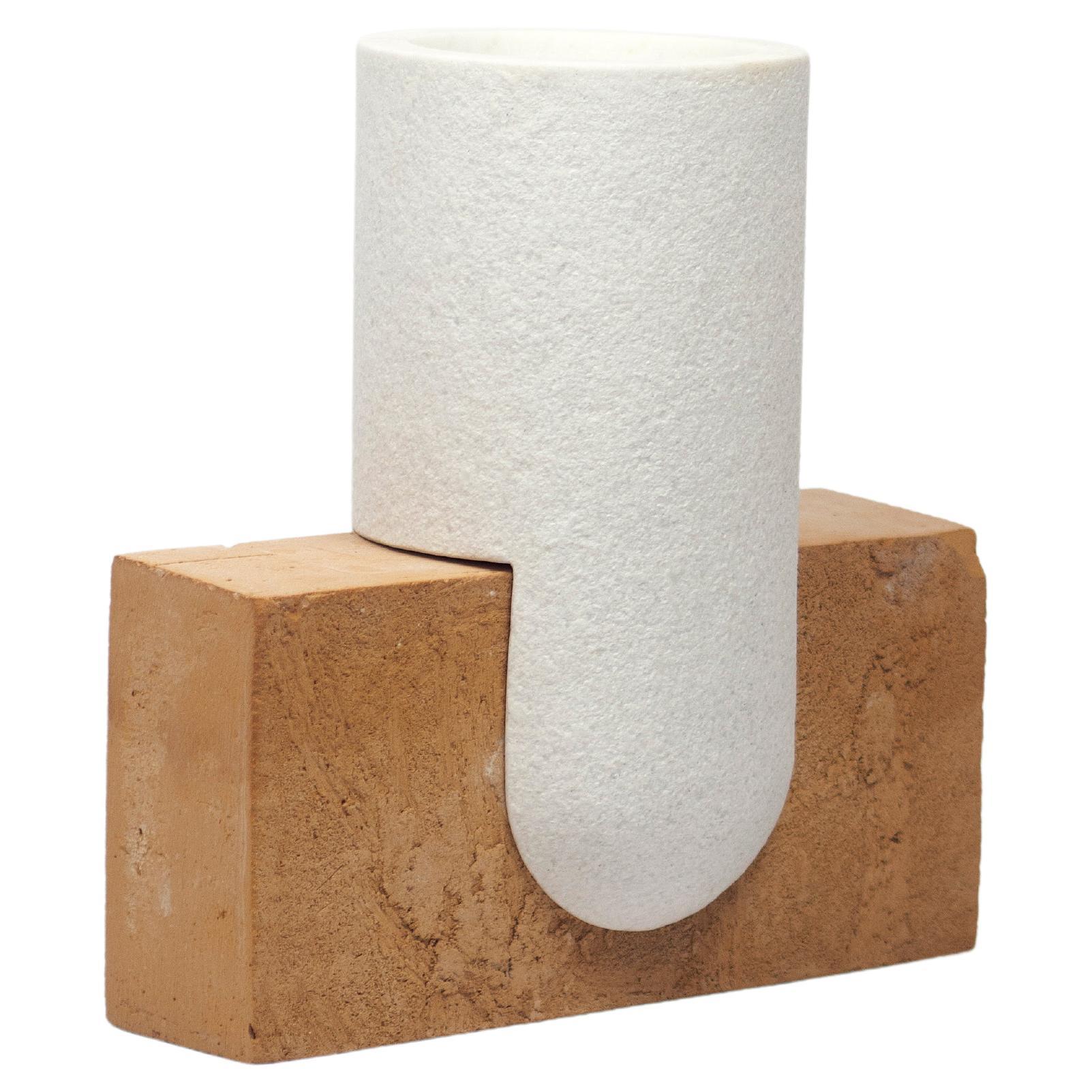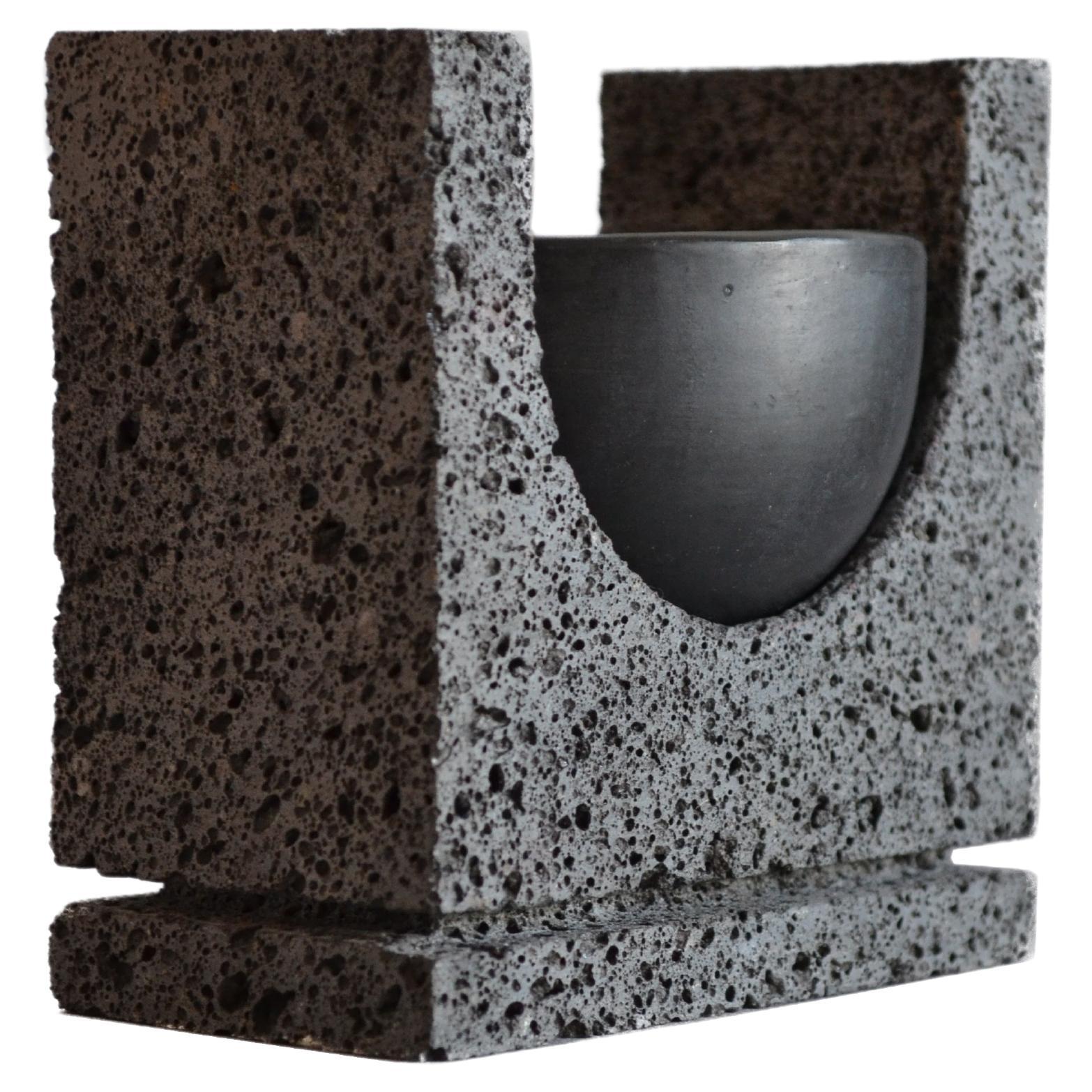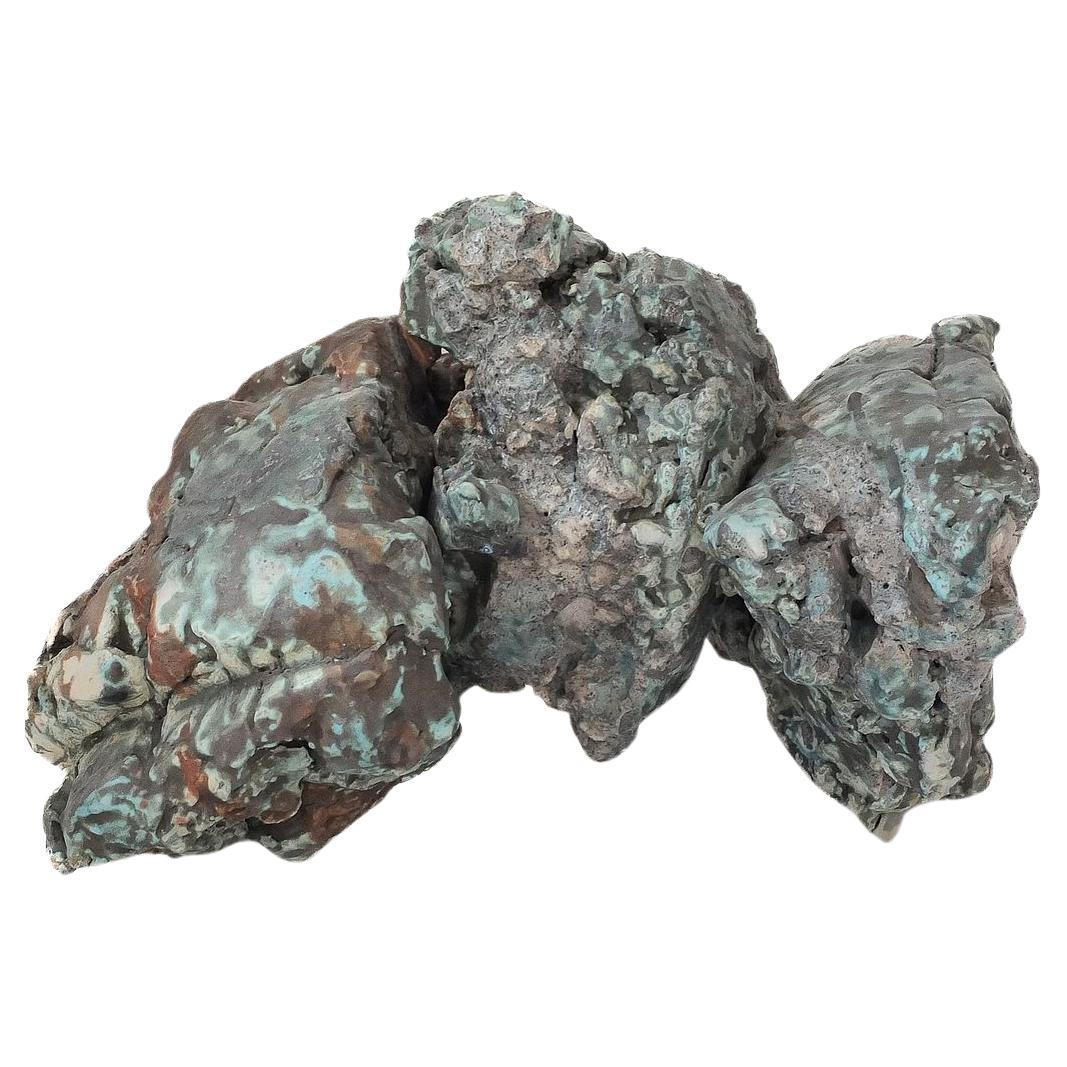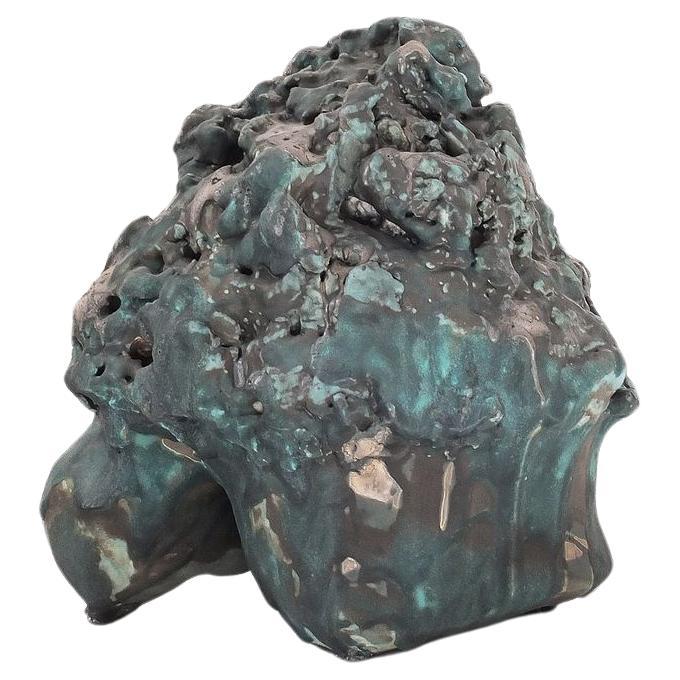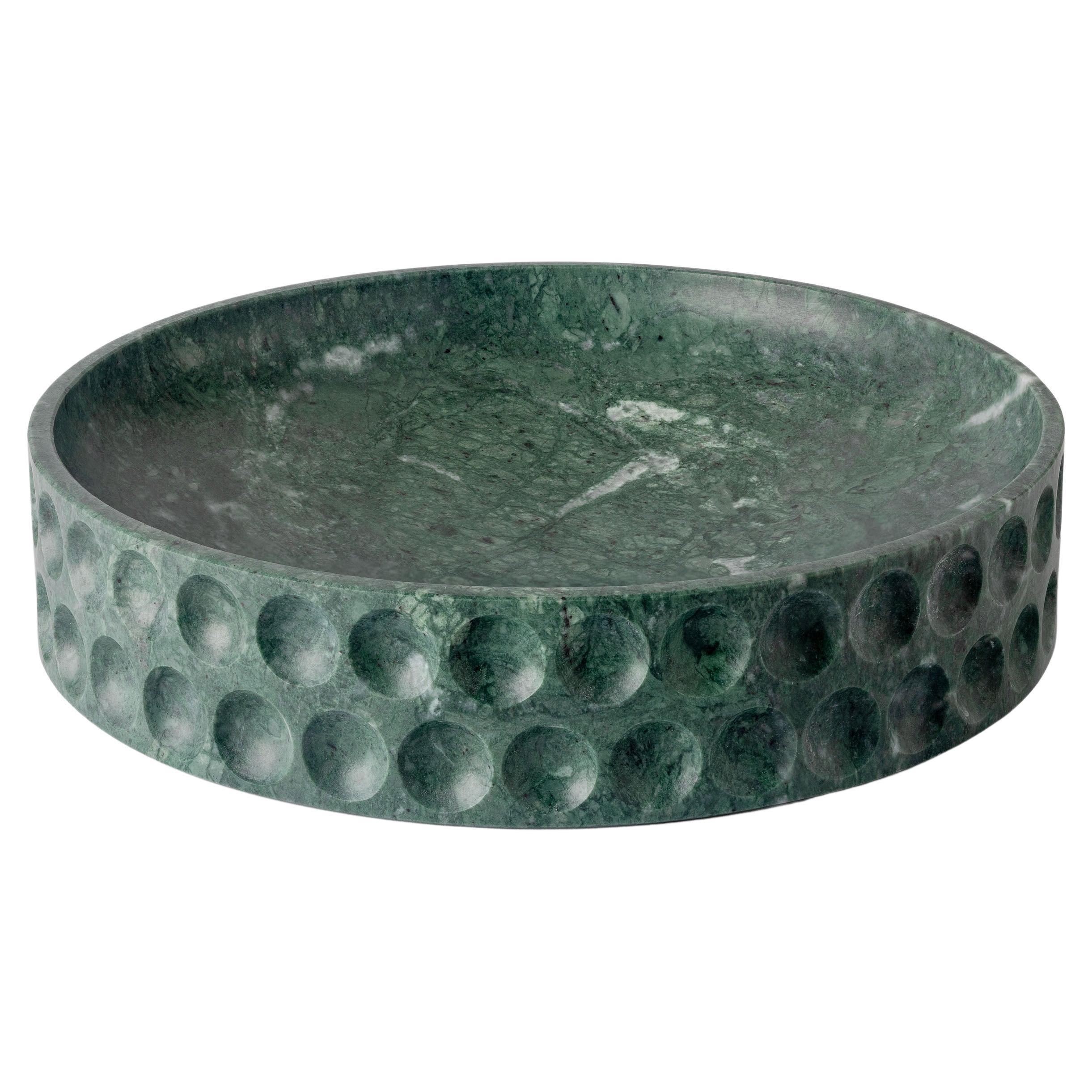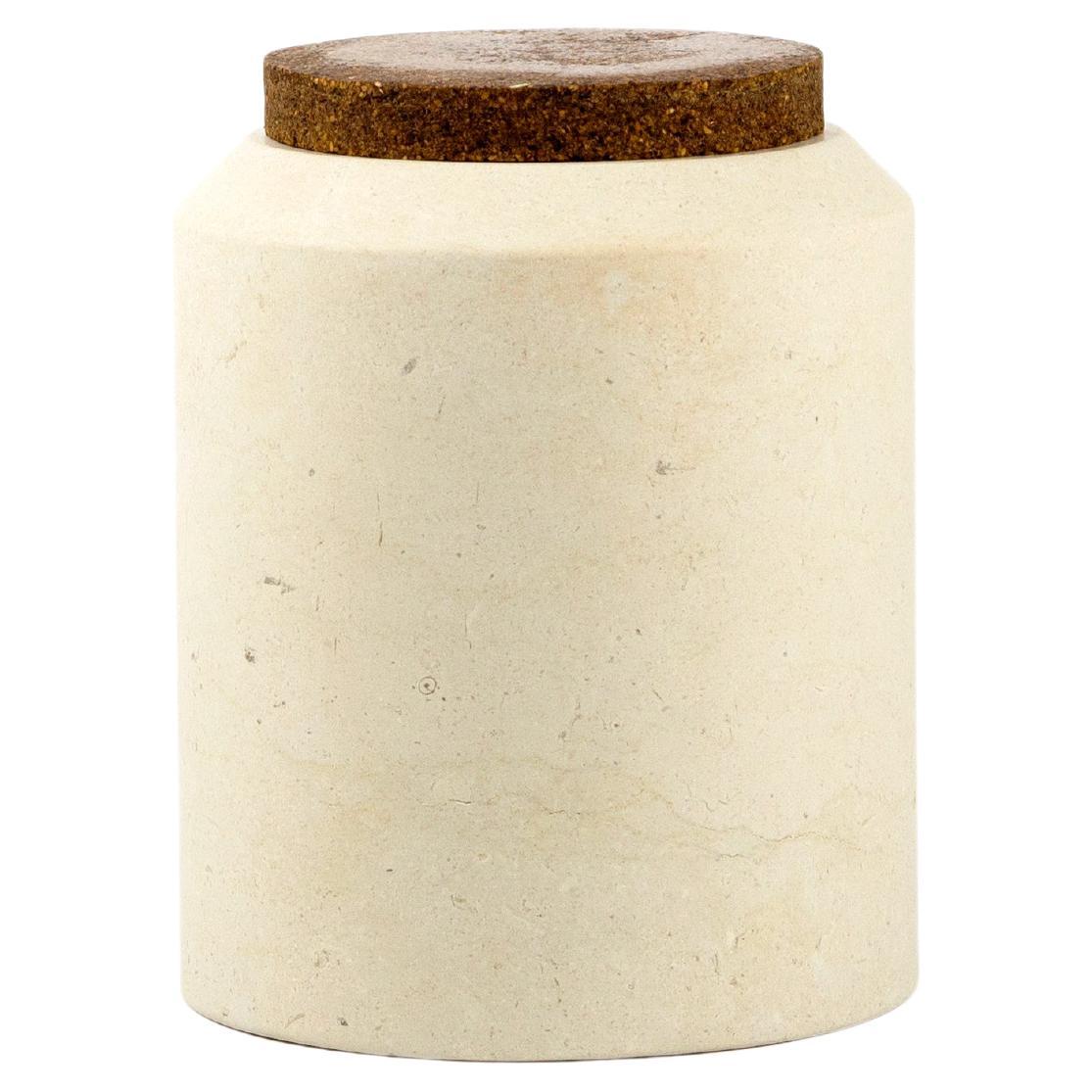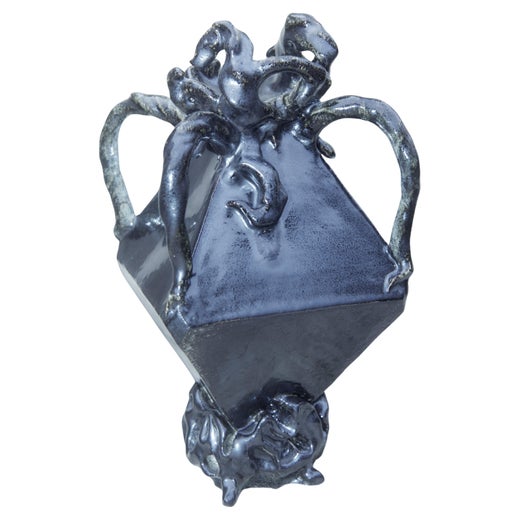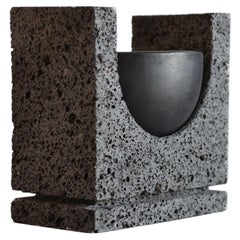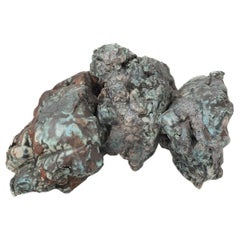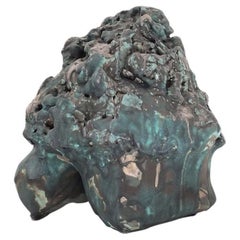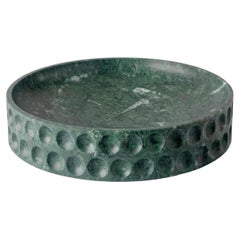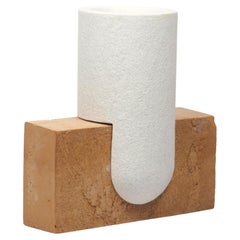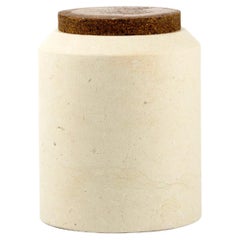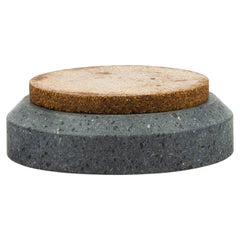Items Similar to Arrebol Escalonado by Studioroca
Want more images or videos?
Request additional images or videos from the seller
1 of 7
Arrebol Escalonado by Studioroca
$9,497.48per item
£7,162.84per item
€8,151per item
CA$13,131.10per item
A$14,709.04per item
CHF 7,725.72per item
MX$178,857.15per item
NOK 97,832.81per item
SEK 92,869.64per item
DKK 62,050.75per item
Quantity
About the Item
Arrebol Escalonado by Studioroca.
Dimensions: 18 x 18 x 30.5 cm.
Materials: volcanics rocks essential oils diffuser.
Studioroca is a Mexico City design studio focused on architecture, interior design and contemporary furniture. Its penchant for collaboration, the promotion of local talent, artisanal skills and natural materials, and its ever-present pull toward sustainable practices have seen the studio create highly emotive environments and unique functional pieces that speak of a forward-thinking, borderless approach to design. Intro Through architecture, interior design and furniture, STUDIOROCA portrays a distinct Mexican aesthetic, where sophisticated, elegant designs become bold statements of strong masculine lines and dark moody shades that contrast dramatically with elongated curves and highly textured surfaces. Based in Mexico City, the studio has, since its inception, offered much more than simple design solutions, its impetus always being to meaningfully improve lives through design. By promoting, supporting and offering a platform for other Mexican designers in its two stores in Polanco and Condesa, STUDIOROCA has been at the forefront of the modern-day Mexican design movement for over 15 years. The studio’s ability to artfully blend its own architecture and interior design with both local and international product is testament to its glocal outlook. While proudly Mexican and inherently influenced by the country’s culture and craftsmanship, its designs talk to a cosmopolitan, international sense of style. STUDIOROCA’s respect for the environment and reverence of traditional skills has led to the pursuit of sustainable practices, while its affinity for collaboration and promotion of artisanal skills has seen the studio produce work in conjunction with countless talented designers and craftspeople. Its confidently utilitarian designs are the result of risk-taking, boundary-pushing processes that emerge from STUDIOROCA’s constant quest to establish innovative solutions, while simultaneously respecting each of its projects’ unique locations, incorporating the surrounding environment into the design language. Working closely with clients, a personal rapport ensures delving into the core of every design requirement, leading to the ultimate achievement of deeply embedded needs. Ultimately, what STUDIOROCA presents is a fresh iteration of Mexican design, a version which is at once moving, intoxicating and comforting. History STUDIOROCA was founded by Carlos Acosta and Rodrigo Alegre. When, in 2002, the two independent Mexico City architects were commissioned to work collaboratively on the architecture and interiors of a new spa, they were frustrated by the lack of affordable furniture available, and embarked on designing their own pieces for the project. And so STUDIOROCA was born. Initially a furniture store in the heart of the then up-and-coming leafy suburb of Condesa, it has developed into a fully fledged architecture and interior-design studio, with another store in the city’s high-end design district of Polanco, which opened in 2011. Its line of furniture, all designed and manufactured in Mexico, had humble production beginnings in a small kitchen-design factory, a foundation that has carried through into the studio’s current philosophy of small-scale, high-quality production. In conjunction with its own range of functional pieces, STUDIOROCA has always invited other local designers to showcase their work in its two stores, and, what started with three additional designers’ pieces in 2002, has led to collaborations with many more, now presenting the limited-edition work of 28 Mexican designers through its UNION- brand, while continuing to retail exclusive international brands such as Tom Dixon, Moooi and GAN. 2 More recently, the studio’s architectural and interior projects have included large housing developments and hotels, fully employing STUDIOROCA’s 360-degree approach to design. Founders and team Architects by training, founders Carlos Acosta and Rodrigo Alegre prefer to follow an unconventional, integrated model of design that incorporates its many varied facets, allowing their two unique approaches to complement one another. Rodrigo, who graduated from Universidad Anáhuac Norte, is able to envision how color and texture will combine as he explores the emotive nuances he wishes to create within a new environment. His abstract thoughts are brought to life by Carlos, the rational half of the design duo. Trained at Universidad Iberoamericana, with a student exchange to the University of Texas, Carlos’ ability to grasp volumes and spaces brings dreams to fruition through the perfect positioning of wall divisions, furniture pieces and light-streaming windows. Their small dedicated team of designers and architects plays an integral role in realizing the studio’s ambitious visions, with over 200 projects having been completed by this intimate team. Beyond designing, these passionate professionals offer practical solutions, bringing their experience in all forms of design to manifest in big-picture thinking that pays attention to detail, celebrates collaboration and goes the extra mile. The approachable, personal style with which the STUDIOROCA team works is a reflection on the responsibility its people place on themselves as architects and designers who venture beyond the drawing board. Sustainability STUDIOROCA’s focus on sustainability has seen the company establish itself as a trailblazer in the realization of buildings and furniture pieces that are produced with a sense of conscience and responsibility, taking into account the full production chain, from material source to distribution of wealth. The studio has done away with environmentally harmful varnishes on its furniture pieces, and now only use FSC-certified hardwood. It also pledges to keep materials to a minimum, a consideration most appreciated in its 77 range of furniture, where only the necessary functional structures have been designed, and where small leftover pieces of wood from bigger cuts are utilized, rather than sourcing new pieces. This approach continues in its architecture and interior designs, with 80% of materials sourced locally. This, coupled with its use of solar panels, the harvesting of rainwater, and the inclusion of indigenous gardens in its projects, has led to STUDIOROCA’s application for Leadership in Energy and Environmental Design (LEED) certification, which is currently under review. For the studio, sustainability has a much further reach than the natural environment, however. Its projects take into account social, cultural and economic sustainability too, by ensuring its production chain – from the craftspeople producing hand-worked elements, to its low-environmental-impact manufacturing line – all sits within Mexico so that the 3 communities benefiting financially are those who have been an integral part of the process. Architecture In STUDIOROCA’s architectural projects, authentic materials that are true to their Mexican origin, such as local mountain rocks, regional marble and indigenous wood, are utilized in new ways to highlight their natural rawness, deep texture and prized imperfections, imbuing buildings with unique character. It’s through such character that every structure portrays its personality, suited to the people who live, work and relax within it. This unpretentious use of materials follows through to metals, which are encouraged to rust and patinate as the building interacts with nature’s elements and becomes part of the environment surrounding it, giving projects an essential sense of place, where the here and now is as important as the then and there. Interior design STUDIOROCA’s interior style leans toward textured materials and dark hues contrasted with paler wood and lighter accent tones. These evocative, luxurious interiors are enlivened by carefully considered lighting that enhances the tonality of moody dark browns, deep blues and a spectrum of blacks, and highlights textures through illuminated reflections. Where environments dictate a paler palette, textures and materials make up the necessary contrast. Local willow wood on wall panels, flooring made from recinto volcanic rock, and countertops decorated with Mexico’s retapado marble become talking points, made even more appealing with plant life and greenery introduced indoors. Furniture Combining its deep respect for handcrafted, artisanal product, and its future-forward approach to technology and innovation, STUDIOROCA’s range of furniture places emphasis on high-quality offerings, producing its ranges in low quantities, often customized to suit the specific requirements of its varied projects. Veering away from industrialized production lines, it employs sophisticated hand-worked machinery, in line with its approach to sustainability and simplicity. The studio’s premiere collection (2002-2008) was shaped by a groundbreaking application of materials and forms, resulting in award-winning designs that set contemporary Mexican design on the map. Pieces from this collection were shown at Fabrica Mexicana and Museo de Arte Moderno in Mexico City and in the MoMA store in New York. The 2008 Eco collection initiated a change in the production of STUDIOROCA’s furniture pieces, adapting a sustainable view regarding design – a philosophy that continues to guide the studio’s practices today. Sourcing FSC-certified wood, eliminating varnishes, and using local materials wherever possible, this collection was the start of a conscious undertaking to work with local artisans and support local industry, an outlook that was celebrated at the launch of the Eco range at the Mexican Gallery of Design. Taking the sustainable sensibility a step further, the 77 range of 2010 made use of natural 4 waxes and oils and limited the use of glues, thus enabling the wood to be reused after its furniture lifespan. This playful range was designed with only the necessary structures and frames, transforming furniture to linear pieces where just the necessary materials are utilized and no superfluous details exist. The studio marked its 10-year anniversary with Diez (2012), a collection of 10 pieces especially designed by 10 of Mexico’s top designers and studios, which included Ariel Rojo, Carmen Cordera, CCubica, Gloria Cortina, Sebastián Ocampo, Sebastián Beltrán, Leonel Vivanco, Christian Vivanco, German Velasco and Carlos Torre. Sebastián Ocampo’s Minerva tables epitomised the ‘sustainability’ brief given to these creatives, his designs produced by artisans in Ixtlán de Juárez, Oaxaca, with local materials and manufacturing processes. The 2016 Turca range was yet another collaboration. The result is a collection that considers materials, production and final use of furniture from both countries’ perspectives. The studio’s latest range, produced in 2017 and 2018 to celebrate 15 years of furniture-making, is a new take on old forms, profiting from years of research and experimentation. Lamps, chairs and tables are re-envisioned in marble and scorched wood, allowing for multiple uses both inside and outdoors. No matter the year, or the range, STUDIOROCA’s furniture proudly honors Mexican design, its impeccable craftsmanship and its natural materials. Collaboration Through collaboration with both local and international designers, and attendance at design fairs such as Wanted Design in New York, STUDIOROCA has been instrumental in creating an awareness of and appreciation for Mexican design both locally and internationally, helping to develop a design industry that’s constantly pushing boundaries to venture forward. Since Design Week Mexico’s inception in 2008, STUDIOROCA has participated in this annual showcase of local talent. Since 2013, it has helped put together the event’s Diseño Contenido, where 20 shipping containers are assembled overnight in the Polanco neighborhood to exhibit Mexican design for one weekend only. During the 2014 version of Design Week Mexico, the studio collaborated with Tom Dixon Design Research Studio to launch the new BMW Mini Cooper four-door, creating a multi-faceted space that included a club, a barbershop and a stylish rooftop terrace, where they ingeniously suspended a vehicle from the ceiling. In the same year, STUDIOROCA and Tom Dixon collaborated again, this time for the launch of the British designer’s special-edition Hennesy XO bottle, creating a ‘Shop in Shop’ in the STUDIOROCA store in Polanco. The studio also organized a conference with the legendary designer in Museo Tamayo. For Design Week Mexico 2015, STUDIOROCA participated in Visión y Tradición, inviting five different artisans from Chiapas to create tableware, using their distinct materials and techniques, including glass, clay, wool and wood. These newly developed products went on to become part of STUDIOROCA’s UNION- range, a line of gallery-like special-edition homeware products and furniture pieces. Started in 2016, the UNION- label aims to launch, promote and commercialize the 5 best work from the country’s premier designers.
- Dimensions:Height: 12.01 in (30.5 cm)Width: 7.09 in (18 cm)Depth: 7.09 in (18 cm)
- Style:Post-Modern (Of the Period)
- Materials and Techniques:Stone,Other
- Place of Origin:Colombia
- Period:
- Date of Manufacture:2022
- Production Type:New & Custom(Current Production)
- Estimated Production Time:7-8 weeks
- Condition:
- Seller Location:Geneve, CH
- Reference Number:1stDibs: LU1219234284262
Galerie Philia
Galerie Philia is an international contemporary sculptural design and art gallery representing emerging and established designers and artists. The gallery is the brainchild of two brothers who share a lifetime passion for art, literature and philosophy. Their distinct academic background sets them apart from their peers, as it sees them following a rhizomatic and transcultural approach in the way they select works. This involves combining elements from multiple cultures in what becomes a network of harmoniously interconnected roots, ultimately revealing the beauty of each unique creation. The gallery’s non-hierarchical curation sits apart from the ephemerality of trends and focuses instead on the true aesthetic quality of the piece – alluring and timeless. Unlike others, Galerie Philia does not focus on a single style – whether minimalist, organic or raw – but rather embraces heterogeneity. The Galerie Philia takes pride in discovering new talents, providing them with multiple international platforms to showcase their latest creations. As well as propelling the newest generation of 21st century collectible design, Galerie Philia also works with internationally known design artists. Galerie Philia has a strong international presence, with galleries in Geneva, New York and Singapore. In addition to their permanent spaces, the gallery organizes temporary group exhibitions and artists residencies in first-class locations around the world.
Made to order creations can be done: please contact us for any request.
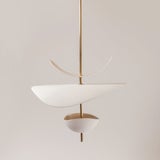
About the Seller
5.0
Recognized Seller
These prestigious sellers are industry leaders and represent the highest echelon for item quality and design.
Diamond Seller
Premium sellers with a 4.7+ rating and 24-hour response times
Established in 2015
1stDibs seller since 2015
4,977 sales on 1stDibs
Typical response time: <1 hour
- ShippingRetrieving quote...Shipping from: CDMX, Mexico
- Return Policy
Authenticity Guarantee
In the unlikely event there’s an issue with an item’s authenticity, contact us within 1 year for a full refund. DetailsMoney-Back Guarantee
If your item is not as described, is damaged in transit, or does not arrive, contact us within 7 days for a full refund. Details24-Hour Cancellation
You have a 24-hour grace period in which to reconsider your purchase, with no questions asked.Vetted Professional Sellers
Our world-class sellers must adhere to strict standards for service and quality, maintaining the integrity of our listings.Price-Match Guarantee
If you find that a seller listed the same item for a lower price elsewhere, we’ll match it.Trusted Global Delivery
Our best-in-class carrier network provides specialized shipping options worldwide, including custom delivery.More From This Seller
View AllCopalera Decorative Piece by Omar Ortiz
Located in Geneve, CH
Copalera Decorative Piece by Omar Ortiz, 2021
Dimensions: H10 x D10cm
Materials: Volcanic stone, black clay.
It is a decorative piece that mixes black clay from Oaxaca and stone...
Category
2010s Mexican Modern Abstract Sculptures
Materials
Stone
$1,794 / item
Silva Untitled Object 01 by Studio Cúze
Located in Geneve, CH
Silva Untitled Object 01 by Studio Cúze
One of a Kind
Dimensions: D 17 x W 30 x H 22 cm
Materials: Porcelain, copper glaze.
Size may vary.
Studio Cúze
I am a Berlin based Japanese ...
Category
2010s German Post-Modern Ceramics
Materials
Porcelain
$2,050 / item
Silva Untitled Object 02 by Studio Cúze
Located in Geneve, CH
Silva Untitled Object 02 by Studio Cúze
One of a Kind
Dimensions: D 30 x W 25 x H 32.5 cm
Materials: Porcelain, copper glaze.
Studio Cúze
I am a Berlin based Japanese ceramic artist...
Category
2010s German Post-Modern Ceramics
Materials
Porcelain
$2,307 / item
Mirage Contenitore Alto by Studio Intervallo
Located in Geneve, CH
Mirage Contenitore Alto by Studio Intervallo
Dimensions: D 30 x H 6.2 cm
Materials: green Guatemala marble.
Available in other stones.
The Mirage collection comes from the mono...
Category
2010s Italian Post-Modern Centerpieces
Materials
Marble
$1,316 / item
Stein 2 by Lina Rincon
Located in Geneve, CH
Stein 2 by Lina Rincon
Dimensions: 20 x 30 x 30 cm
Materials: Glass, stone, metal
Colors and dimensions may slightly vary, each piece is unique and ma...
Category
2010s English Modern Vases
Materials
Stone, Metal
$1,922 / item
Manantial Vase by Omar Ortiz
Located in Geneve, CH
Manantial Vase by Omar Ortiz, 2021
Dimensions: H21 x W10cm
Materials: Volcanic stone, black clay.
Is a vase that is held off the ground by a hand-carved stone base. The vase resists fire below 950 degrees so it can be used to burn charcoal inside it or incense or contain water for flowers and plants. The vase made of black Oaxacan clay filters a very light humidity through its walls, which are cooked at a low temperature with wood and not glaze. The base of Manantial is made of volcanic stone known as recinto. The shape of the base is inspired by the legs of the traditional molcajete that is used to grind spices and chili peppers while the arches refer to the basic shape of the entrance to a cave creating an empty space between the ground and the black clay vase...
Category
2010s Mexican Modern Abstract Sculptures
Materials
Stone
$1,922 / item
You May Also Like
Soprasotto, piccolo
By Gumdesign
Located in Viareggio, Toscana
A collection made of hand-hammered and numerically controlled white Carrara marble meets the more artisan terracotta - the hand-pulled brick - according to the most ancient tradition...
Category
2010s Italian Vases
Materials
Marble
$1,957 / item
Racchiuso, Alto
By Gumdesign
Located in Viareggio, Toscana
Enclosed in time, the container becomes stone and the contents its seal. The collection is composed of three storage elements in Trani Stone, Lavic Stone and Emperador Light and a pa...
Category
2010s Italian Vases
Materials
Marble
$1,404 / item
Racchiuso, Basso
By Gumdesign
Located in Viareggio, Toscana
Enclosed in time, the container becomes stone and the contents its seal. The collection is composed of three storage elements in trani stone, lavic stone and emperador light and a pa...
Category
2010s Italian Vases
Materials
Marble
$891 / item
Soprasotto, grande
By Gumdesign
Located in Viareggio, Toscana
A collection made of hand-hammered and numerically controlled white Carrara marble meets the more artisan terracotta - the hand-pulled brick - according to the most ancient tradition...
Category
2010s Italian Vases
Materials
Marble
$2,406 / item
Racchiuso, Medio
By Gumdesign
Located in Viareggio, Toscana
Enclosed in time, the container becomes stone and the contents its seal. The collection is composed of three storage elements in Trani Stone, Lavic Stone and Emperador Light and a pa...
Category
2010s Italian Vases
Materials
Marble
$1,060 / item
Contemporary Vocanic V-1404 BOBO Series Vessel
Located in 1204, CH
At its core, my work rejects the idea of perfection. Being free of flaws and defects directly contradicts my idea of freedom of expression, and I see my work as a vehicle for communi...
Category
2010s Belgian Vases
Materials
Ceramic
Read More
Galerie Philia Unveils Limited-Edition Designs at Giampiero Tagliaferri’s New L.A. Studio
For the exhibition “Materia Perpetua,” the gallery asked an international group of makers — including Tagliaferri — to explore the possibilities of a surprisingly versatile material: onyx.
Galerie Philia Doesn’t Just Discover Fresh Design Talent — It Grows It
With an impressive slate of international exhibitions, the Geneva-based gallery raises the profiles of emerging designers.
More Ways To Browse
Kitchen Table Centerpieces
End Of Day Glass
Dark Glass Bottle
Glass Table Lighter
Silver Table Lighter
Christian Wood Dining Table
Volcanic Rock Tables
Metal And Glass Dining Table Chair Set
Mexican Glass Top Table
Rojo Marble
German Texas
Wood Ceiling Panel
Large Harvest Table
Moooi Container Table
Oaxaca Black Clay
Mexican Silver Frame
Moooi Editions
Dixon Bottle
